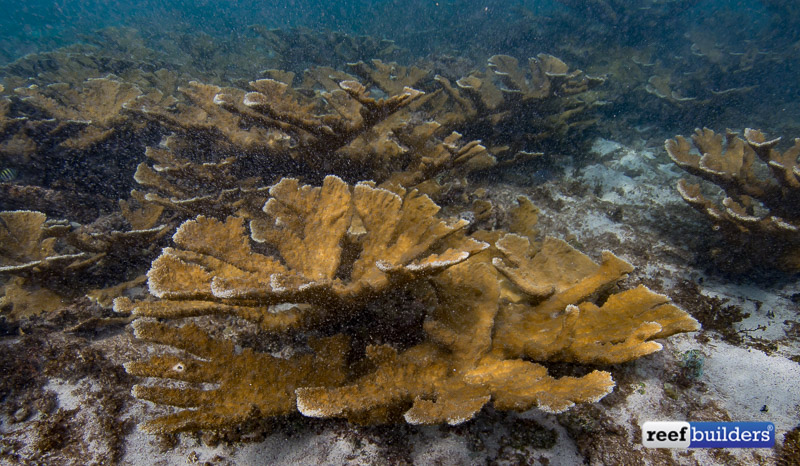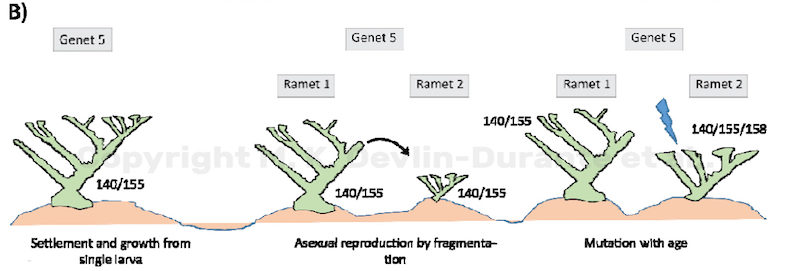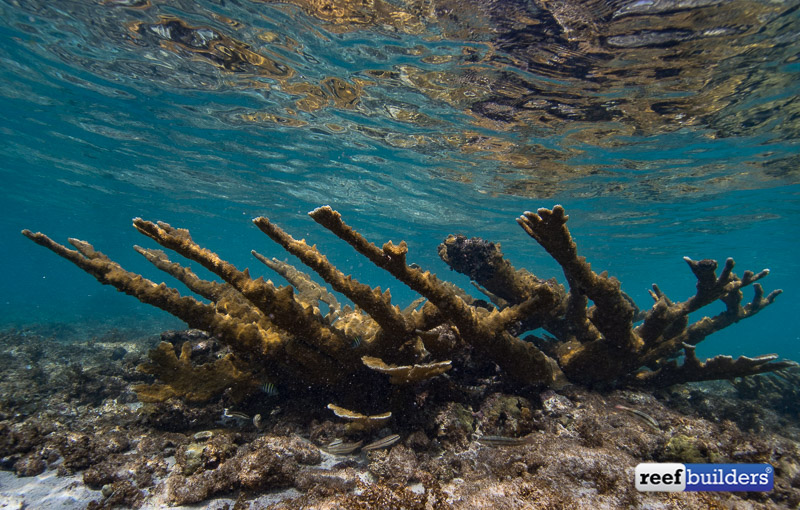Acropora palmata
Researchers at Penn State University have shown that colonial Acorpora corals, in particular, Acropora palmata are much older than previously thought. Although the oldest portion of the coral may no longer exist, the team looked at mutations in the living coral genomes to determine the age of Acropora palmata genotypes.
The results, which appear in the November 2016 issue of the journal Molecular Ecology, suggest that Acropora palmata genomes have been around 250-3500 years. While some calculations suggest the genomes are much older—more than 5000 years.

“This was surprising, as previously, only cold-water corals were found to be older than 1,000 years,” said Iliana Baums, associate professor of biology, Penn State.
Previously, corals have been aged by studying the colonies skeleton and looking at colonies size. However, as corals can reproduce through fragmentation, a single colony does not accurately represent the age of that coral’s genome. “These pieces look like young corals because they are small, but their genomes are just as old as the big colony from which they broke,” said Baums.
Now, for the first time, Baums and her colleagues have used a genetic approach to estimate the ages of corals. This method determines when the egg and the sperm originally met to form the genome of the coral colonies.
Researchers took over 3000 samples from Acropora colonies which were surrounded by genetically identical Ramets, (smaller colonies which started from a fragment of the mother). Then they tracked the number of mutations that accumulated in the genome since the origins of the coral. Because mutations tend to arise at a relatively constant rate, the researchers were able to estimate an approximate age in calendar years of the coral genomes in their study.
 This research has implications for how we think about corals and what we do to protect them. Long-lived A. palmata genomes imply these corals have a high capacity to adapt to past environmental change. “Yet recent mass mortality events in A. palmata suggest that capacity is now being frequently exceeded,” Said Baums.
This research has implications for how we think about corals and what we do to protect them. Long-lived A. palmata genomes imply these corals have a high capacity to adapt to past environmental change. “Yet recent mass mortality events in A. palmata suggest that capacity is now being frequently exceeded,” Said Baums.
“Knowing the age of individuals in a population is important for understanding their population history and whether the population is increasing or decreasing. It is especially important when the population under study is threatened.”
If Acropora palmata genomes have survived hundreds to thousands of years, it shows these corals are resilient to environmental changes, giving hope they can continue to adapt. What is different now is the environmental changes threatening corals are human-induced, which means the change is happening at a much quicker rate than in the past. Therefore, the coral’s past ability to survive environmental change does not necessarily predict their future success. [Penn State]
[ngg_images source=”galleries” container_ids=”1362″ display_type=”photocrati-nextgen_pro_slideshow” image_crop=”0″ image_pan=”1″ show_playback_controls=”1″ show_captions=”0″ caption_class=”caption_overlay_bottom” caption_height=”70″ aspect_ratio=”1.5″ width=”100″ width_unit=”%” transition=”fade” transition_speed=”1″ slideshow_speed=”5″ border_size=”0″ border_color=”#ffffff” ngg_triggers_display=”always” order_by=”sortorder” order_direction=”ASC” returns=”included” maximum_entity_count=”500″]



